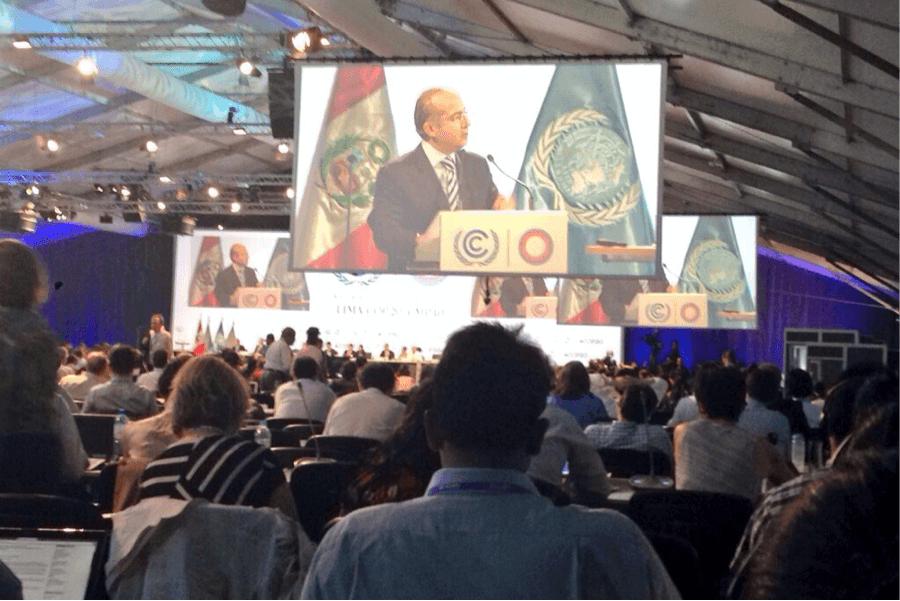Government representatives from around the world met last week in Lima, Peru to negotiate global emissions reductions as part of the annual UNFCCC Conference of Parties (COP20). Once again, the need to mobilize more investment in a low-carbon, climate-resilient economy was an important point of debate.
Climate Policy Initiative’s analysis is playing a key role informing serious discussion on climate finance and finding solutions to increase the effectiveness and scale of climate finance investments. Here are the themes we saw at this COP that we feel will shape climate finance action and debate over the next year.
Entrance to Lima COP20 1. Finance is flowing but it’s not enough. The COP20 High-Level Finance Ministerial began with a presentation of the UNFCCC’s Biennial Assessment and Overview of Climate Finance Flows 2014. This research, which draws on Climate Policy Initiative’s work to track climate finance, tracked between 340 and 650 USD billion in annual investment. As CPI has shown, this figure is far short of the need. Annual climate investment compared to the need 2. Governments voiced support for innovative initiatives that unlock private finance. CPI’s analysis shows that while public finance often provides the conditions for climate investment to take place, private investors contribute the largest share of finance, year after year, in countries across the world. It also shows that public finance alone will not be enough to meet the investment need. Several government representatives spoke of the need to find innovative ways to unlock increased private investment. Representatives from Denmark, the Netherlands, the UK, and U.S. used their time on the COP plenary floor to voice support for one such initiative – The Global Innovation Lab for Climate Finance – which CPI supports as its Secretariat, advancing innovative financial instruments to drive significant additional investment in developing countries. 3. The Green Climate Fund reached more than $10 billion in commitments – good progress ahead of COP21 in Paris next year. Following the pledges from Japan, the U.S. and UK over the last weeks, Australia, Belgium, Mexico, Peru, Colombia, Austria, Spain, Norway, and Canada helped the Green Climate Fund reach its $10bn goal at this COP with new pledges. These pledges to help developing nations deal with climate change are good news. They increase the chances for a global climate deal next year in Paris, and if spent wisely, can supplement domestic public resources where they fall short and drive billions in private investment toward low-carbon and climate-resilient growth. 4. Finance for adaptation is becoming a higher priority. The Green Climate Fund restated its intention to use half of its finance for adaptation purposes. Germany also stepped up on adaptation, committing an additional 50 million euros to the Adaptation Fund. CPI’s work shows that while adaptation finance grew by 12% last year, it still falls short of the need. 5. Tracking of climate finance continues to improve. Following on recommendations from the UNFCCC’s Biennial Assessment and Overview of Climate Finance Flows 2014, many countries used their time on the COP20 plenary floor during the Finance Ministerial to talk about the need for an agreed-upon definition of climate finance and improved tracking systems. CPI’s analysis supports this need and shows that climate finance tracking can support countries’ attempts to formulate better policies. 6. Economic growth and combating climate change can go hand in hand. Last but not least – there was a growing sense that acting on climate can also spur economic growth at this year’s COP. Many experts have documented that climate change and the resulting extreme weather would have huge social and financial costs to the global economy. This year, the New Climate Economy report showed that measures that reduce climate risk can not only help to avoid a shrinking economy in the future, but can also help grow the economy, today.



